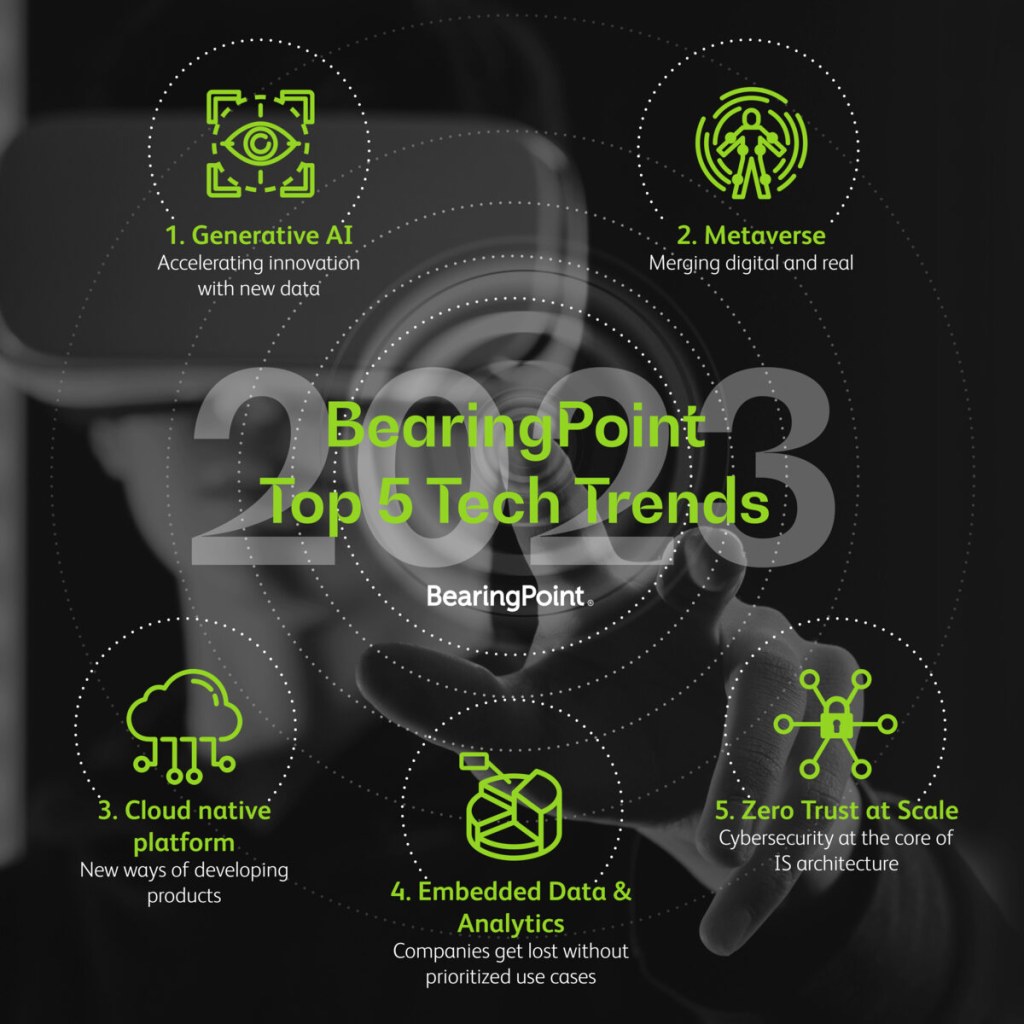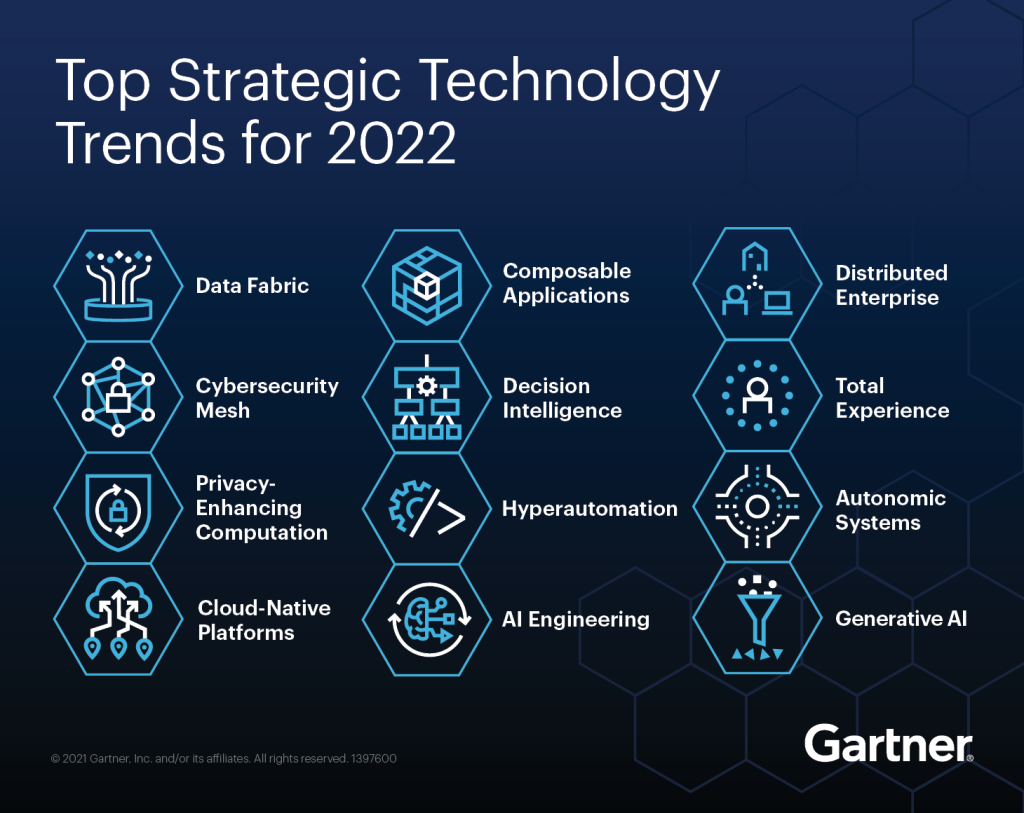Discover The Exciting New Technology Trends In Digital – Unleash The Power Of Innovation!
New Technology Trends in Digital
Introduction
Hello Readers,
3 Picture Gallery: Discover The Exciting New Technology Trends In Digital – Unleash The Power Of Innovation!



Welcome to our article on the new technology trends in digital. In this fast-paced digital era, technology is constantly evolving, bringing new advancements and innovations. Staying updated with the latest trends is crucial for individuals and businesses to remain competitive and adapt to the ever-changing digital landscape. In this article, we will explore the top technology trends that are shaping the digital world today. So, let’s dive in!
Table of Contents

Image Source: gcom.cloud
1. Introduction
2. What are the new technology trends in digital?
3. Who benefits from these trends?

Image Source: bearingpoint.com
4. When did these trends emerge?
5. Where can we see the impact of these trends?

Image Source: googleapis.com
6. Why are these trends important?
7. How do we adapt to these trends?
8. Advantages and disadvantages of new technology trends
9. FAQ
10. Conclusion
11. Final Remarks
What are the new technology trends in digital?
🔥The digital world is constantly evolving, and there are several exciting technology trends that are revolutionizing various industries. Some of the noteworthy trends include:
1. Artificial Intelligence (AI) and Machine Learning (ML) – AI and ML technologies are being integrated into various applications and systems to enhance automation, decision-making, and personalization.
2. Internet of Things (IoT) – IoT has enabled the connection of devices and objects through the internet, leading to smart homes, smart cities, and improved efficiencies in various sectors.
3. Big Data and Analytics – The abundance of data generated in today’s digital world has created a need for advanced analytics tools and techniques to extract valuable insights and drive informed decision-making.
4. Cloud Computing – Cloud computing offers scalable and flexible computing resources, allowing individuals and organizations to store, manage, and access data and applications remotely.
5. Cybersecurity – With the increasing digital threats and risks, cybersecurity measures have become essential to protect sensitive data and systems from malicious activities.
6. Augmented Reality (AR) and Virtual Reality (VR) – AR and VR technologies are transforming the way we experience and interact with digital content, providing immersive and engaging experiences.
7. Blockchain – The decentralized and transparent nature of blockchain technology has the potential to revolutionize industries like finance, supply chain, and healthcare, among others.
Who benefits from these trends?
🔑The new technology trends in digital have a wide range of beneficiaries, including:
1. Individuals – These trends offer individuals opportunities for personal growth, convenience, and improved living standards. For example, smart home devices powered by IoT provide comfort and efficiency.
2. Businesses – Organizations can leverage these trends to streamline operations, improve productivity, enhance customer experiences, and gain a competitive edge. AI and ML can automate tasks and provide data-driven insights.
3. Industries – Various sectors such as healthcare, finance, transportation, and entertainment can benefit from these trends. For instance, AI and robotics are revolutionizing healthcare with improved diagnosis and treatment.
4. Society – The adoption of these trends can have a positive impact on society as a whole. For example, IoT-based smart cities can improve energy efficiency, reduce traffic congestion, and enhance public safety.
5. Economy – These technology trends contribute to economic growth by creating new job opportunities, fostering innovation, and driving digital transformation across industries.
When did these trends emerge?
⌛The emergence of these technology trends can be traced back to different periods:
1. Artificial Intelligence (AI) and Machine Learning (ML) gained significant attention in the 1950s, but recent advancements have accelerated their adoption and applications.
2. Internet of Things (IoT) started gaining traction in the 2000s with the development of wireless sensor networks and the growth of internet connectivity.
3. Big Data and Analytics became prominent in the early 2000s as data volumes increased exponentially, and organizations realized the potential value in harnessing this data.
4. Cloud Computing emerged in the 2000s and has since become a foundational technology for many businesses, offering scalability and cost-effectiveness.
5. Cybersecurity has always been a concern, but with the rising frequency and complexity of cyber threats, it has gained significant importance in recent years.
6. Augmented Reality (AR) and Virtual Reality (VR) have been evolving over the past few decades, with significant advancements in hardware and software capabilities.
7. Blockchain technology was first introduced in 2008 with the creation of Bitcoin, and its potential applications beyond cryptocurrency are continuously being explored.
Where can we see the impact of these trends?
🌍The impact of these new technology trends can be witnessed in various aspects of our lives:
1. Smartphones and Mobile Devices – AI, IoT, and AR/VR technologies have transformed our mobile devices into powerful tools that enable us to access information, communicate, and interact with the digital world.
2. E-commerce and Online Retail – Big data analytics and AI algorithms are used to personalize shopping experiences, recommend products, and optimize supply chain management.
3. Healthcare – AI-powered chatbots assist in triaging patients, while IoT devices and wearables monitor health conditions. Big data analytics enable predictive analytics for early disease detection.
4. Transportation – IoT-connected vehicles, AI algorithms for autonomous driving, and smart traffic management systems are revolutionizing the transportation industry.
5. Entertainment – AR and VR technologies enhance gaming experiences, while streaming platforms leverage big data analytics to personalize content recommendations.
6. Finance – Blockchain technology is disrupting traditional financial systems by enabling secure and decentralized transactions, eliminating intermediaries, and improving transparency.
7. Education – AI-powered chatbots assist in personalized learning, while cloud-based platforms facilitate remote learning and collaboration.
Why are these trends important?
❗The new technology trends in digital are important for several reasons:
1. Innovation and Progress – These trends drive innovation and progress, pushing boundaries, and challenging traditional ways of doing things.
2. Efficiency and Productivity – Adopting these trends can lead to increased efficiency and productivity in various processes, enabling individuals and organizations to achieve more in less time.
3. Competitive Advantage – Embracing these trends allows businesses to gain a competitive advantage by staying ahead of their competitors and meeting the evolving needs of customers.
4. Improved Experiences – These trends enhance user experiences, making interactions with technology more seamless, personalized, and immersive.
5. Addressing Challenges – Some of these trends, such as cybersecurity, help address the challenges and risks associated with the digital world, ensuring the safety and security of individuals and organizations.
6. Sustainability – These trends also contribute to sustainability efforts by optimizing resource utilization, reducing waste, and enabling greener solutions.
7. Economic Growth – By fostering innovation, creating job opportunities, and driving digital transformation, these trends contribute to economic growth and development.
How do we adapt to these trends?
🔧Adapting to the new technology trends in digital requires a proactive approach:
1. Continuous Learning – Stay updated with the latest advancements through online courses, webinars, industry conferences, and networking with experts.
2. Embrace Change – Be open to change and willing to explore new technologies, tools, and methodologies that can enhance your skills and work processes.
3. Collaborate and Share Knowledge – Engage with communities, forums, and online platforms to share knowledge, learn from others, and collaborate on projects.
4. Invest in Infrastructure – Ensure you have the necessary hardware, software, and internet connectivity to leverage these trends effectively.
5. Develop Digital Skills – Enhance your digital literacy by acquiring skills in areas such as data analytics, AI, cybersecurity, and programming.
6. Experiment and Innovate – Encourage a culture of experimentation and innovation within your organization to explore the potential applications of these trends.
7. Stay Agile – Be adaptable and agile in your approach to quickly respond to emerging trends and make necessary adjustments to your strategies and operations.
Advantages and Disadvantages of New Technology Trends
✅🚫Like any other advancements, the new technology trends in digital come with their own set of advantages and disadvantages. Let’s explore them:
Advantages:
1. Increased Efficiency – Automation and optimization offered by these trends lead to improved efficiency in various processes.
2. Enhanced Decision-Making – AI and analytics provide valuable insights for informed decision-making.
3. Improved Communication – Digital technologies enable seamless and instant communication across distances.
4. Cost Savings – Cloud computing and automation can lead to cost savings for businesses.
5. Personalized Experiences – AI-powered personalization enhances user experiences in various domains.
Disadvantages:
1. Privacy Concerns – The abundance of data raises concerns over privacy and data protection.
2. Job Displacement – Automation and AI may lead to job displacement in certain industries.
3. Cybersecurity Risks – With increased connectivity, the risk of cyber threats and data breaches also increases.
4. Dependence on Technology – Overreliance on technology may lead to vulnerabilities and disruptions if systems fail.
5. Ethical Considerations – AI and automation raise ethical concerns, such as bias and algorithmic decision-making.
FAQ
1. What are the potential applications of blockchain technology beyond cryptocurrency?
Blockchain technology has the potential to revolutionize various industries beyond cryptocurrency. Some of the potential applications include supply chain management, healthcare records management, voting systems, and intellectual property protection.
2. How can AI and ML technologies improve customer experiences?
AI and ML technologies can analyze customer data, predict preferences, and personalize recommendations, leading to enhanced customer experiences. Chatbots and virtual assistants powered by AI can also provide 24/7 customer support and assistance.
3. What are the challenges in implementing IoT on a large scale?
Implementing IoT on a large scale faces challenges such as interoperability between devices and platforms, data security and privacy concerns, scalability, and the complexity of managing a vast network of connected devices.
4. How can businesses ensure the security of their data in the cloud?
Businesses can ensure the security of their data in the cloud by implementing robust access controls, encryption, regular backups, and monitoring for any suspicious activities. Working with reputable cloud service providers who offer strong security measures is also crucial.
5. How can individuals protect themselves from cyber threats?
Individuals can protect themselves from cyber threats by regularly updating their devices and software, using strong and unique passwords, being cautious of suspicious emails and links, and using reliable antivirus software. Additionally, educating oneself about common cyber threats and practicing safe online behavior is essential.
Conclusion
In conclusion, the new technology trends in digital are reshaping the world as we know it. From AI and IoT to blockchain and AR/VR, these trends have the potential to revolutionize industries, enhance experiences, and drive economic growth. It is crucial for individuals and businesses to stay informed, adapt to these trends, and leverage their advantages while addressing the associated challenges. Embracing the digital transformation is essential to thrive in this rapidly evolving digital landscape.
Final Remarks
🌟In the digital age, staying updated with the latest technology trends is crucial. However, it is equally important to approach these trends with caution and consideration for ethical, privacy, and security aspects. As technology evolves, so does our responsibility to use it responsibly and ensure its benefits are accessible to all. Let’s embrace these new technology trends and strive for a future where digital innovation enhances our lives and creates a more connected and sustainable world.
This post topic: Latest Technology Trends



